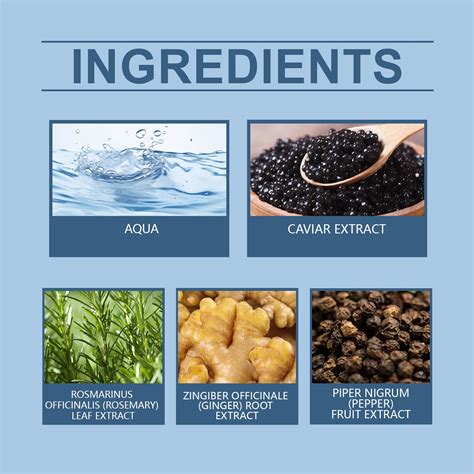Introduction
Hair, a defining feature of our physical appearance, requires proper nourishment to maintain its health and vitality. Protein, a crucial component of the hair shaft, plays a vital role in determining its strength, elasticity, and overall condition. When hair lacks sufficient protein, it can become weak, brittle, and prone to breakage. Protein treatments for hair offer a solution to this problem, replenishing the lost protein and restoring the hair’s integrity.

Understanding Protein Treatments
Protein treatments are cosmetic procedures designed to penetrate the hair shaft and deposit protein molecules. These treatments can be applied at home or in a salon, using various methods such as:
- Protein shampoos and conditioners: These products contain protein derivatives that gently cleanse and condition the hair while replenishing lost protein.
- Protein masks and deep conditioners: These treatments are applied directly to the hair and left on for a specific duration to allow deep penetration of protein molecules.
- Bonding agents: These treatments work by forming new bonds within the hair shaft, strengthening its structure and reducing breakage.
- Leave-in protein sprays: These products provide continuous protein nourishment by being applied to the hair after washing and styling.
Benefits of Protein Treatments
Protein treatments offer numerous benefits for hair health, including:
- Increased strength and elasticity: Protein molecules strengthen the hair shaft, making it less prone to breakage and damage.
- Enhanced curl definition: For curly hair, protein treatments can define curls, reduce frizz, and improve manageability. li>Reduced hair loss: Healthy hair with sufficient protein is less likely to fall out prematurely.
- Improved hair texture: Protein treatments smooth the hair cuticle, resulting in a noticeably softer and glossier texture.
- Increased shine: Protein-rich hair reflects light, creating a healthy, lustrous appearance.
Types of Protein Treatments
There are various types of protein treatments available, each tailored to specific hair needs:
- Keratin treatments: These treatments use keratin, the primary protein in hair, to smooth and straighten the hair, reducing frizz and curl.
- Collagen treatments: Collagen, a protein found in the skin, can also be used in hair treatments to improve elasticity, reduce breakage, and enhance shine.
- Amino acid treatments: These treatments provide essential amino acids, the building blocks of protein, to nourish and strengthen the hair.
- Plant-based protein treatments: Derived from plant sources such as soy, wheat, and rice, these treatments are rich in essential amino acids and antioxidants to promote healthy hair growth.
- Hydrolyzed protein treatments: These treatments use hydrolyzed protein, broken down into smaller molecules, to penetrate the hair shaft more deeply.
Choosing the Right Protein Treatment
Selecting the appropriate protein treatment depends on several factors, including hair type, condition, and desired results. Consult with a professional hair stylist or dermatologist to determine the most suitable treatment for your individual needs.
Home Remedies for Protein Treatments
While salon treatments offer professional-grade results, there are also effective home remedies for protein treatments:
- Egg white mask: Eggs are rich in protein, making them a natural hair treatment. Whisk egg whites and apply them to damp hair for 10-15 minutes before rinsing.
- Yogurt mask: Yogurt contains lactic acid, which helps break down protein into smaller molecules for easier absorption. Mix plain yogurt with a few drops of honey and apply it to hair for 20 minutes before rinsing.
- Rice water treatment: Rice water is rich in amino acids and can be used as a protein-rich hair rinse. Soak rice in water overnight and use the water to rinse hair after shampooing.
- Protein-rich hair oil: Oils such as coconut, argan, and avocado are rich in proteins and can be applied to the hair as a leave-in treatment to nourish and strengthen the hair.
Common Mistakes to Avoid
When using protein treatments, it’s crucial to avoid common mistakes to prevent hair damage:
- Overuse: Excessive protein treatments can lead to protein overload, making hair stiff, brittle, and prone to breakage.
- Inappropriate treatment selection: Choosing a protein treatment not suitable for your hair type can worsen the condition of your hair.
- Ignoring instructions: Failure to follow the instructions provided for the protein treatment can result in ineffective results or potential damage.
- Leaving treatments on for too long: Overexposure to protein treatments can lead to protein buildup and hair damage.
- Combining too many protein products: Using multiple protein products simultaneously can overwhelm the hair with protein and cause damage.
FAQs
1. How often should I use protein treatments?
For most hair types, protein treatments should be used once every 2-4 weeks. However, the frequency may vary depending on hair damage and condition.
2. Can protein treatments cause hair damage?
When used correctly, protein treatments strengthen hair and prevent damage. However, overuse or incorrect application can lead to hair damage such as breakage, dryness, and frizz.
3. What are the signs of protein overload?
Symptoms of protein overload include hair that is stiff, brittle, prone to breakage, and lacks elasticity.
4. How can I tell if my hair needs protein?
Hair that lacks protein is often weak, brittle, prone to breakage, and frizzy. Other signs include difficulty styling, loss of elasticity, and a dull appearance.
5. Can protein treatments make my hair dry?
While some protein treatments may temporarily make dry hair feel rough, proper moisturizing and nourishing treatments can prevent this effect.
6. Can protein treatments make my hair oily?
Protein treatments do not inherently make hair oily. However, some treatments may contain additional ingredients that can contribute to oiliness if they are not suitable for the hair type.
7. How can I ensure the benefits of protein treatments last longer?
To maintain the results of protein treatments, it’s important to use protein-rich shampoos and conditioners, avoid over-washing, and protect the hair from heat damage and UV radiation.
8. Who should avoid protein treatments?
In general, people with healthy, undamaged hair may not require protein treatments. However, those with damaged, chemically treated, or naturally dry hair may benefit from protein treatments to restore strength and vitality.
